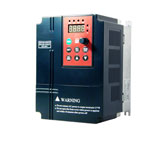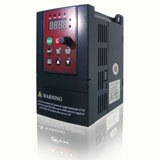Variable torque drive for constant torque application
Q:
I have a 50 HP drive suitable for variable torque application. Can I use the same drive for a 50HP load, but on a constant torque application? Or do I need to up size or downsize these drives? What is the turndown ratio I need to calculate and how will I get it?
A:
Yes you can but the overload level will probably be lower, for instance on a variable torque load the VFD you have may give 150% for 60 seconds whereas on a constant torque load you will only get 110% for 60 secs. When we speak of turn ratio, how slow do you wish to go. With most VFD/Motor combinations you will get the motor too hot if you go below 25Hz. If you need to go slower then further calculations will have to be made.
In general, for example, the power section of a 15hp constant torque VFD is identical to that of a 20hp variable torque VFD. Meaning, not 30% larger but one horsepower size larger. (e. g. 40hp constant torque is same as 50hp variable torque) Only the firmware (control) is different. It has to do with overload. In general, a variable torque load is not subject to overloading, unless you are overspeeding the load. A variable torque load increases with the cube of the speed. In general, only centrifugal pumps and fans are considered variable torque loads. If it isn't one of these, it's generally considered to be a constant torque load, and therefore you should specify a constant torque rated variable frequency drive.
You should upsize the drive one horsepower rating. If you have a 5hp constant torque load, specify a 7.5hp variable torque drive. But beware, the variable torque VFDs are generally not configured to control constant torque loads.
I have a 50 HP drive suitable for variable torque application. Can I use the same drive for a 50HP load, but on a constant torque application? Or do I need to up size or downsize these drives? What is the turndown ratio I need to calculate and how will I get it?
A:
Yes you can but the overload level will probably be lower, for instance on a variable torque load the VFD you have may give 150% for 60 seconds whereas on a constant torque load you will only get 110% for 60 secs. When we speak of turn ratio, how slow do you wish to go. With most VFD/Motor combinations you will get the motor too hot if you go below 25Hz. If you need to go slower then further calculations will have to be made.
In general, for example, the power section of a 15hp constant torque VFD is identical to that of a 20hp variable torque VFD. Meaning, not 30% larger but one horsepower size larger. (e. g. 40hp constant torque is same as 50hp variable torque) Only the firmware (control) is different. It has to do with overload. In general, a variable torque load is not subject to overloading, unless you are overspeeding the load. A variable torque load increases with the cube of the speed. In general, only centrifugal pumps and fans are considered variable torque loads. If it isn't one of these, it's generally considered to be a constant torque load, and therefore you should specify a constant torque rated variable frequency drive.
You should upsize the drive one horsepower rating. If you have a 5hp constant torque load, specify a 7.5hp variable torque drive. But beware, the variable torque VFDs are generally not configured to control constant torque loads.



